A new year , a new decade and hopefully the much promised vaccines will banish Covid and give us back our normal lives .
January is always for me when the garden starts again to grow , the shortest day of the year has passed , the excess of Christmas behind us and by the middle of the month with each day there is a little stretch in the evenings and lots to do in the garden also … that said January for me is a month to struggle through and one I am glad to see the back of !
First snow drops of the year in the front garden , January 31st 2021

We all have trees , shrubs and plants that are in the wrong place or that are not doing well and January is a great month to do something about that . Last month when we had the digger here we moved a multi stemmed silver that was not thriving in the front garden since planted five years ago and this month we tackled a parrotia tree also in the front garden . The parrotia is a small tree also known as the Persian ironwood originally from Iran and has a lovely sprawling habit with dark blue leaves like a purple copper beech . It has the most beautiful leaf colour in autumn , really gorgeous and you can never predict how it will branch out or what direction it will grow and certainly never straight up like a normal tree which is what I love about it .
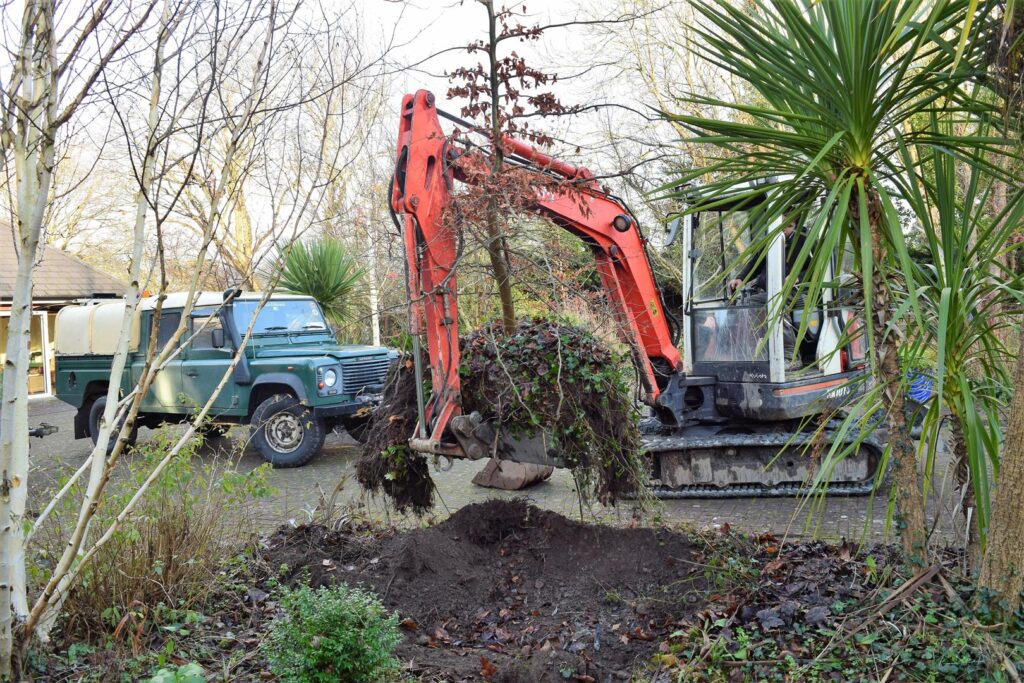
The parrotia was doing really well in it’s spot in the front garden but I always knew from planting that it would be too crowded eventually in that spot but I planted it there because it was the only space , small as it was , that was available … I knew it was better suited in the woodland garden but I also knew the deer love the parrotia and have eaten three previous specimens planted in the Lower Garden so if this one was to survive the deer it had to be in the Front Garden .
I would never have been able to dig it out by hand with enough roots intact but with the digger back in the garden to finish the regravelling of the paths , Peter Cullen was able to whip out a large root ball and replant the parrotia in an area where hopefully it will take and be able to realise it’s full potential … it will take a year or two to bed in and I will babysit it for water through the summer months although moving it as we did in the dormant season it should be fine .
Colour in the January Garden
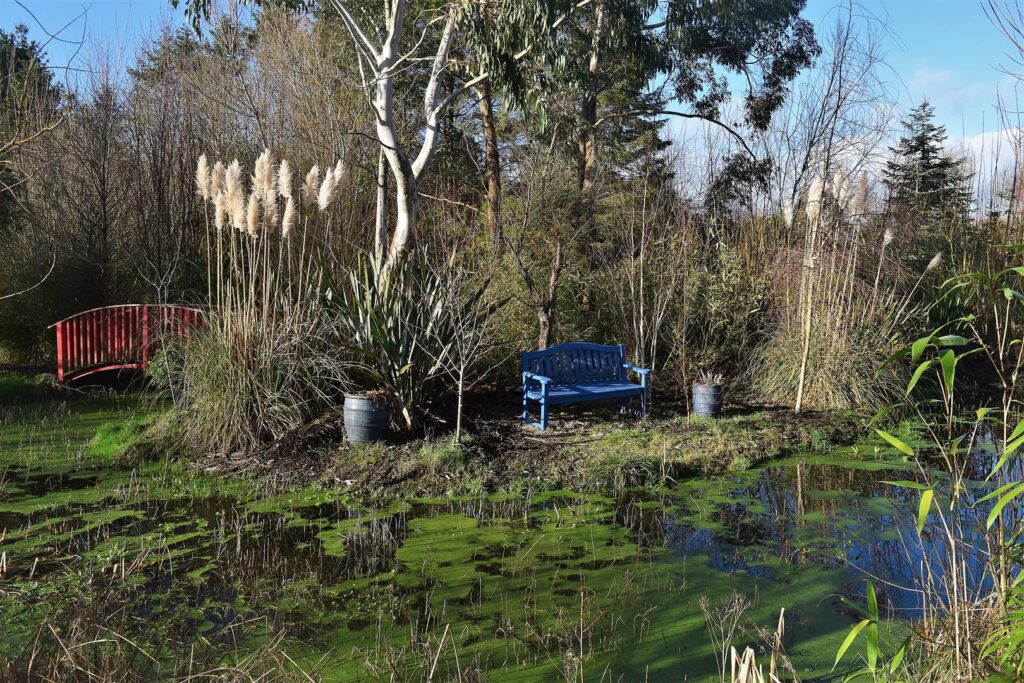
My Father was not a gardener so growing up there was nothing like a gardening book or magazine around the house in Barron Park but what there was plenty of was books on Irish history and the Soviet Union but as an eleven year old I quickly got fed up reading about tractor production in the Ukraine or Nial of the Nine Hostages from Irish legends and found a book on the shelf one day in 1963 “ Burgess & McClean ” famously part of the Cambridge University spy ring recruited by Moscow in the 1940’s and 50’s . From that book I became fascinated with anything to do with that group of grandee English intellectuals Kim Philby , Anthony Blunt , Guy Burgess and Donald McClean who were recruited and spied for Russia against their own country and just this week I finished the latest book about Guy Burgess called Stalin’s Englishman .
For some reason I was especially fascinated by Guy Burgess who although a spy for Russia this was always for ideological reasons and he loved England . After he defected to Russia in 1951 he remained devoted to England and when he died in Moscow in 1963 his ashes were brought back home to be buried in his home village of West Meon .
Twenty tears later in 1983 I was on a cycling trip to the South of England and having done the circuit of the Isle of Wright I was coming off the ferry at Portsmouth and saw a sign for the Meon Valley 30 miles away and immediately headed there to try and see Guy Burgess’s grave . I tried the local graveyard but couldn’t find it until a local man told me that Burgess had been buried in his Mother’s grave but as she had remarried I didn’t know her married name and the local man explained that because of the notoriety that Guy Burgess had as a traitor it was decided not to put his name on the gravestone in case it was vandalised but the name was written along the base of the little plinth running around the grave … I found it covered in long grass and was delighted .
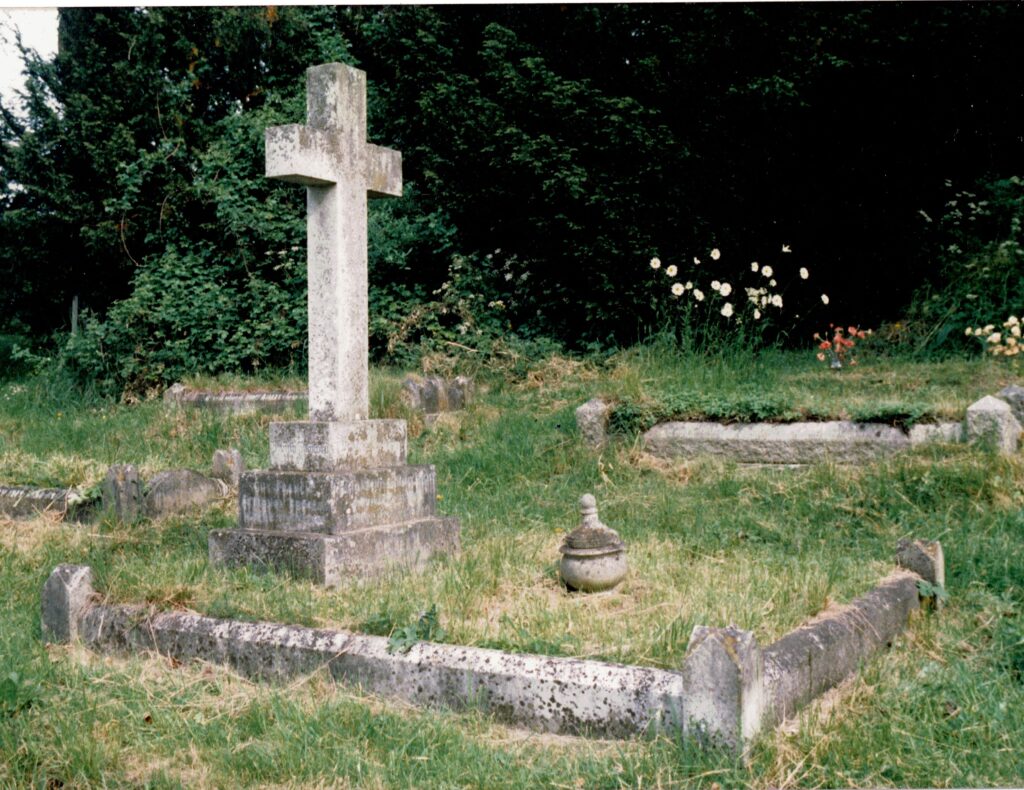
Fast forward to March 1996 and my colleague in the International Conference for Yugoslavia Mission when I was stationed in Montenegro was Yuri Ivanov who was the Russian Envoy attached to the Mission . Yuri and I would be on duty for three days at a time sleeping in a small caravan in the mountains on the Montenegro / Bosnian border . It was an open secret that Yuri while officially a diplomat was a Russian intelligence officer gathering information on our Mission which was then handed over to Serbian Intelligence in Belgrade … the EU knew this of course unofficially but such was the price for allowing our Mission to operate we had to have a Russian intelligence officer imbedded with us and I was nominated to be his partner . We got on great together from our first day and Yuri explained that he loved to cook so if I agreed that would be his role and I could do all the work and about once a week at night Yuri would be collected from our little caravan by Serbian intelligence officers and whisked away by car for a debrief which I would dutifully report to our Mission and everyone was happy with this charade !
Driving conditions in the Montenegro mountains were treacherous in winter and we were lucky on this occaision in February 1996 .

When we were driven out to our remote caravan at the start of every three day shift Yuri would come laden down with bag fulls of vegetable , meat and vodka and my bags would be full of history books that Yuri would pounce on … he was especially fond of anything on Churchill but one day I had brought the latest book on the Cambridge spies and was watching for Yuri’s delighted reaction when he saw it … not a bit of it , barely glanced at it and moved on to the next book and I said “ Yuri I thought you would love that ” … nah says Yuri “ I have read all the original files in Moscow ” !!
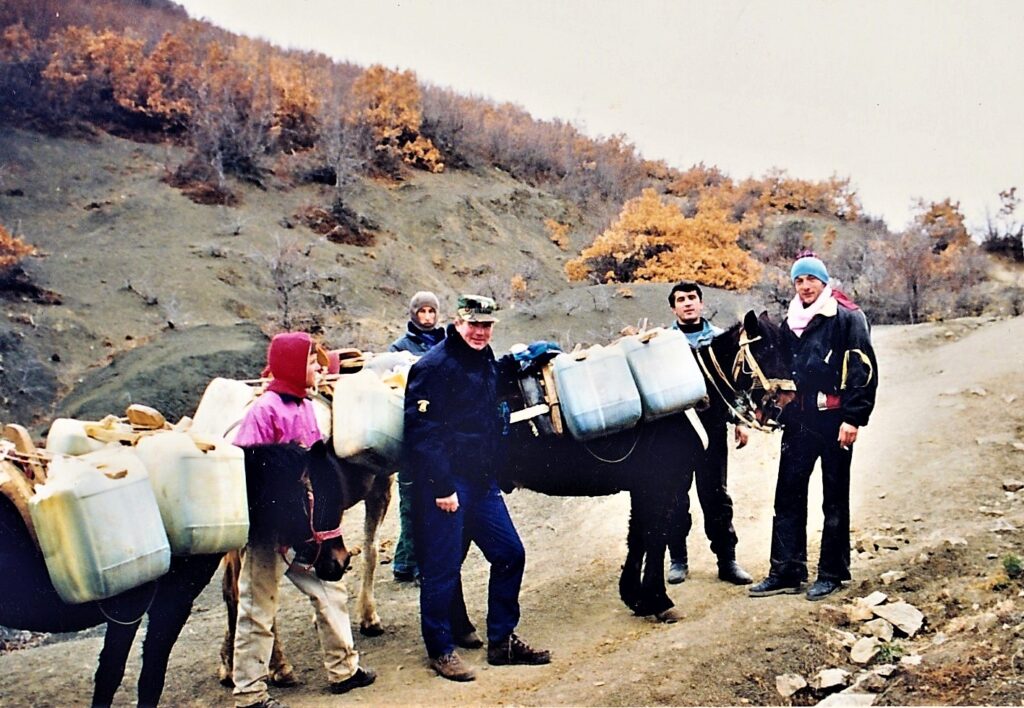
At the end of the Mission we were being presented with our service medals by a Finnish General at a ceremony in Belgrade and I kept looking at mine on the way back to my seat , delighted with myself but I saw Yuri who was behind me in the line for the medal and he barely looked at it before shoving it into his jacket … Yuri I said are you not delighted … nah … Yuri how many medals have you been awarded in your career … 37 … it turned out as he had been a spy in Afghanistan , Berlin and all through the former Soviet republics … and me with my only other medal being my first holy communion medal in St. Mary’s at 8 years of age !!
I took these photos on the Macedonian / Kosovo border in December 1994 while on anti smuggling patrol in the Sharplanina mountains . During the Bosnian war over a million litres of fuel daily was smuggled over the mountains into Serbia by mule and horse .
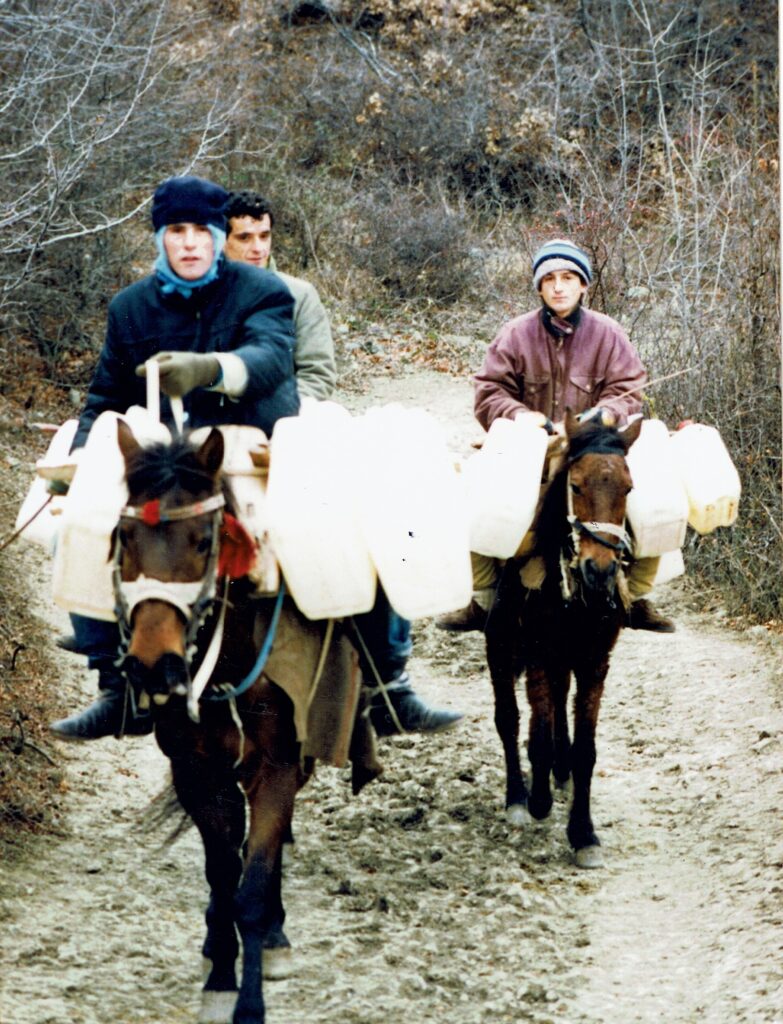
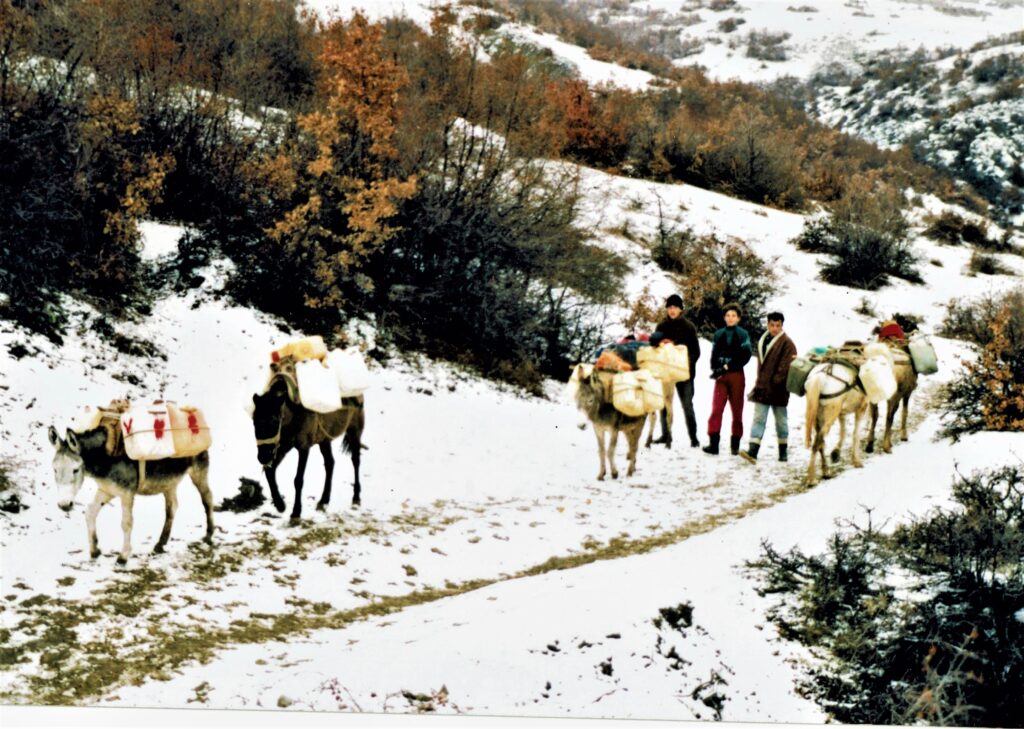
Snezana on UN black hawk helicopter with EULEX anti smuggling patrol in Mitrovica , Kosovo , February 2011

And with EULEX in Pecs, Kosovo December 2010
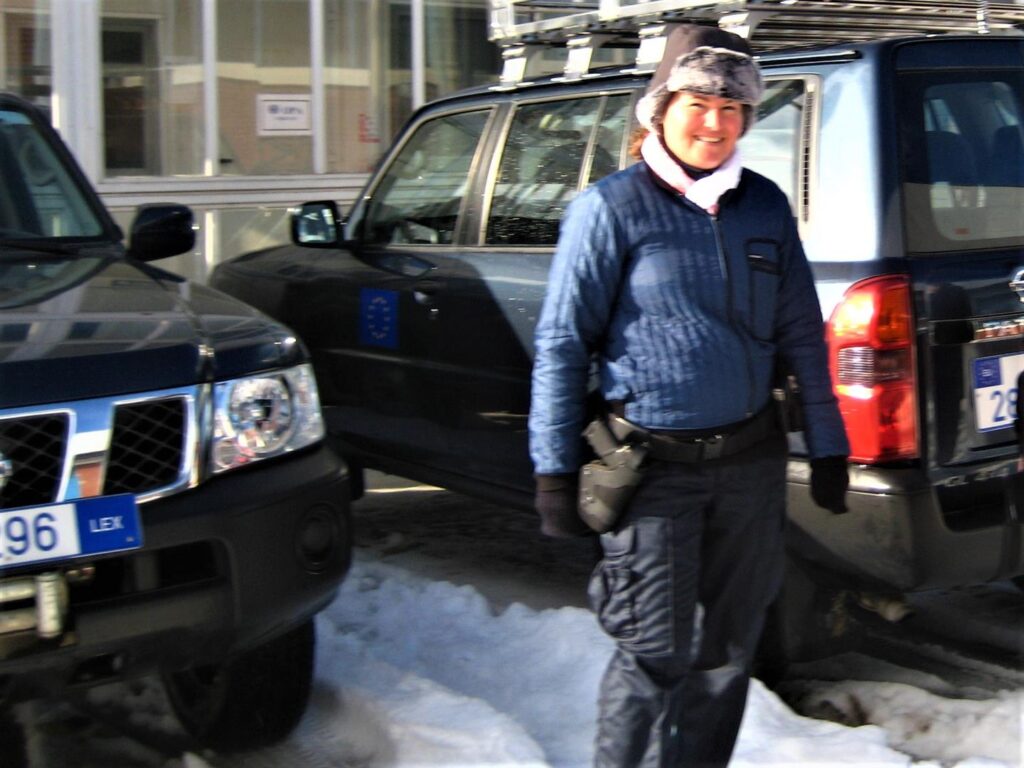
And this week in January 2021 on deer patrol in the Garden .
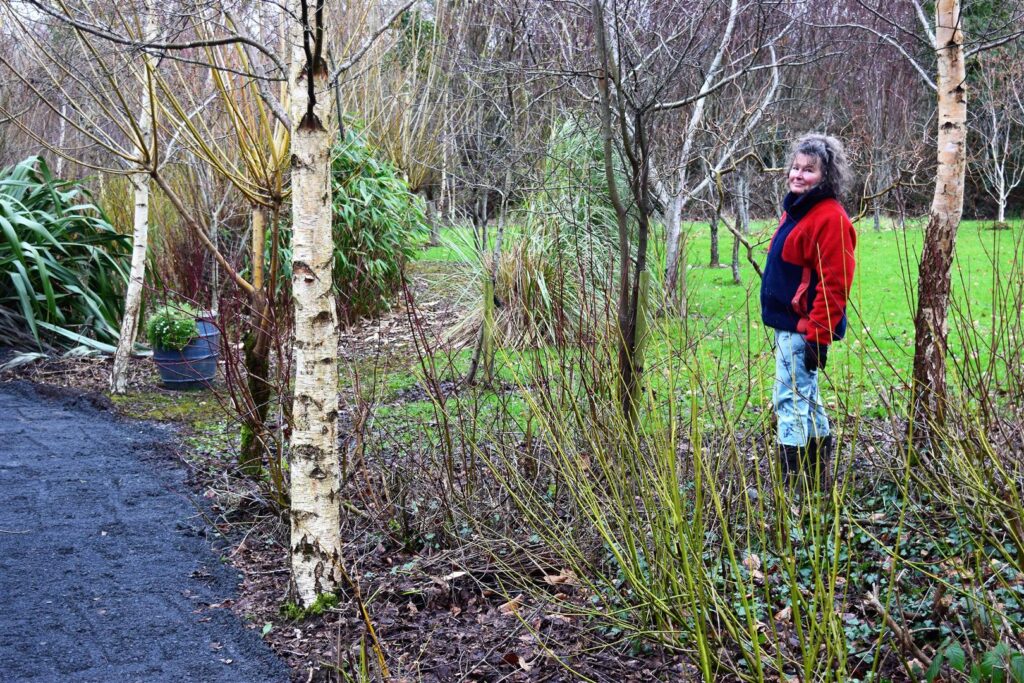
Trees and shrubs for the small garden
After writing about winter colour last month I was asked to list the perfect balance of trees and shrubs for a small garden that require little maintenance and I immediately said design first for winter colour and structure as spring and summer will look after itself . Depending on the size of the garden I would suggest starting with either one or three each of the following … always uneven numbers and the same applies to pots etc. in the garden .

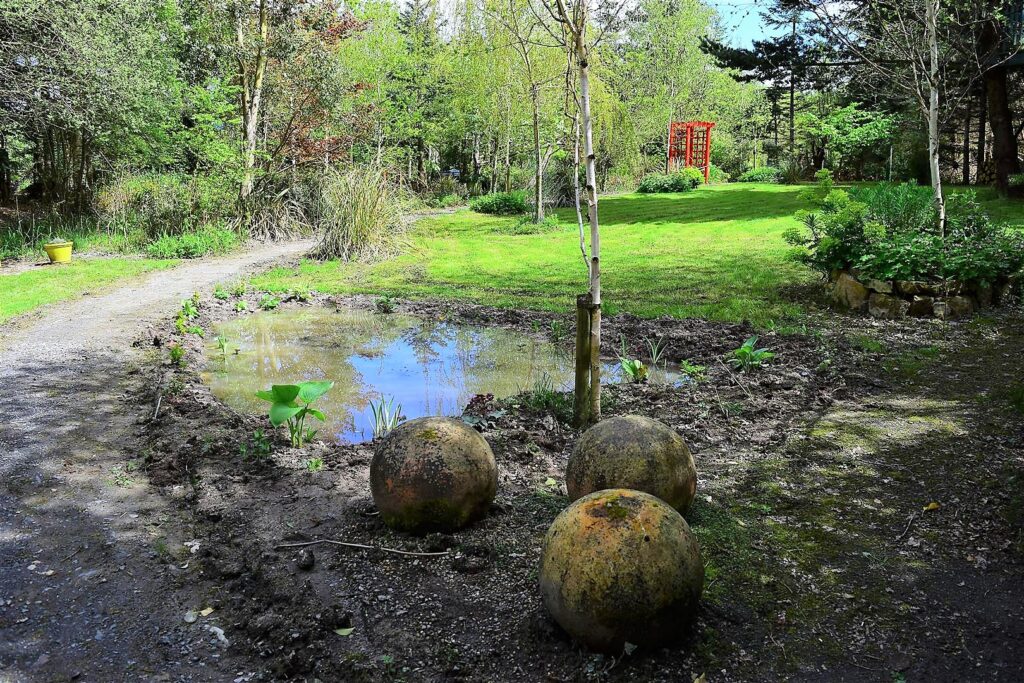
Winter trees & shrubs
Silver birch jacquemontii is my first choice tree and no need to spend big money on super large specimens , two metres is fine as they will put on good growth in the first three years . However if money is flush I would opt for multi stemmed jacquemontii although they can be three time the cost of a single stem but they are stunning and having gulped at the initial cost ( 150 euros each at current prices ) they will light up the winter garden for decades to come . Also the multi stemmed variety do not throw up a huge central trunk as the single jacquemontii can do and then you are panicked into cutting them back hard and these poor mutilated specimens never look the same again – my solution has always been to prune back the central stem of every birch I plant by at least a metre before planting and you only need to do this once and it makes the tree spread out more from the top down and divert it’s growing from the tip and you end up with a nice goblet fanned tree .
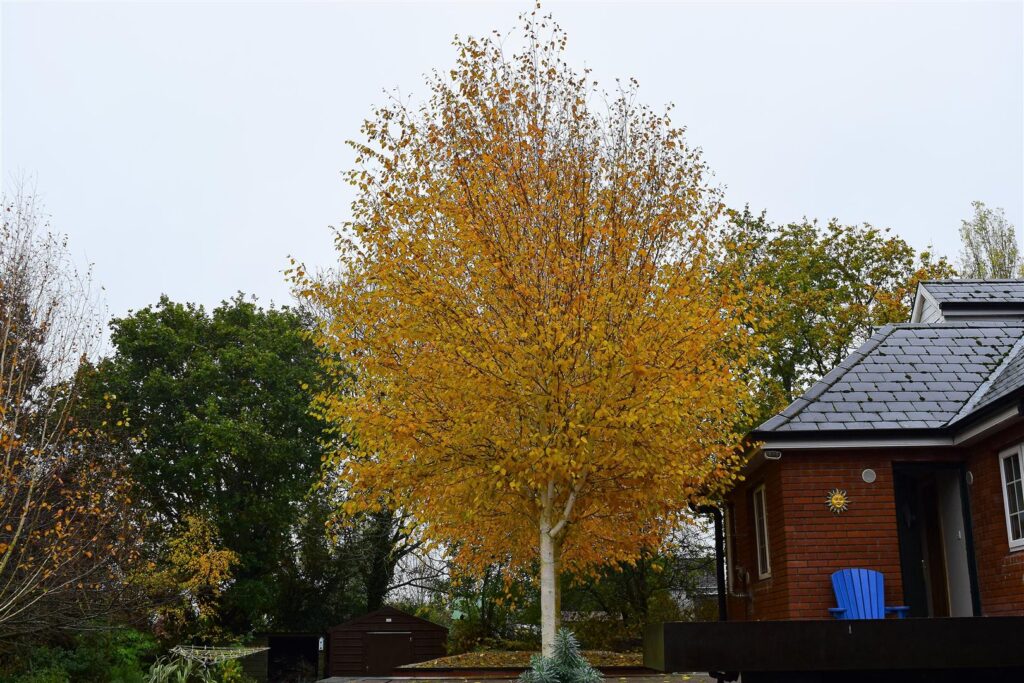
If space is not a problem a tree I would not be without is the golden willow , salix aurea , which has great structure and looks terrific all year but be warned they do spread as big as a small house and you need to plan for that growth .
If space is a problem for the golden weeping willow then I would go for another weeping variety willow , the salix purpurea , which like the golden willow has a very interesting and arresting structure in winter and if your garden can accommodate both varieties then go for it . The great thing about the purple willow is that as a grafted tree they come in three different sizes of rootstock depending on the size you want or can fit and here we grow the purple willow on five foot stems and over a few years they end in a huge mane of sprawling thin branches that weep nicely which look great in winter and summer but a word of warning about this willow is that the rootstock can keep trying to grow side shots of it’s common green willow origin and you need to ruthlessly keep cutting these out otherwise it will take over the entire tree .

Those would be my trees of choice for the winter garden and I wouldn’t bother ever planting one of the spring flowering cherry trees as after their annual three weeks in flower they are a rubbish looking tree and while I am on the subject of flowering trees – one word – don’t !
Let me explain that rather strict “don’t ” , I want a good long return from any tree I plant and flowering trees only give three weeks of interest and that goes for flowering shrubs too . Of course there are exceptions to any rule and I break it myself with hypericum and the spirea called wedding wreath but these two have a nice shape when not in bloom and add structure to the back of a border .
We are talking about trees here for the smaller garden in winter and if space dictates room for only one tree then my choice is for a silver birch in the multi stemmed form .
For winter shrubs go for one or three of the red barked cornus variety elegantissimus which you prune to the ground every March and this keeps the winter bark a vibrant flush off red . I love the dog woods especially this variety elegantissimus which has gorgeous variegated leaves in the spring and summer so a great all rounder .
For containers go for box balls as they have great structure throughout the year as they are evergreen but invaluable in the winter months , I usually group them together and they are equally good in the ground although they won’t tolerate boggy soil which is why they are better in pots in my opinion as you can place them anywhere and can also take a good deal of shade . Boxus is a must have plant for the garden .
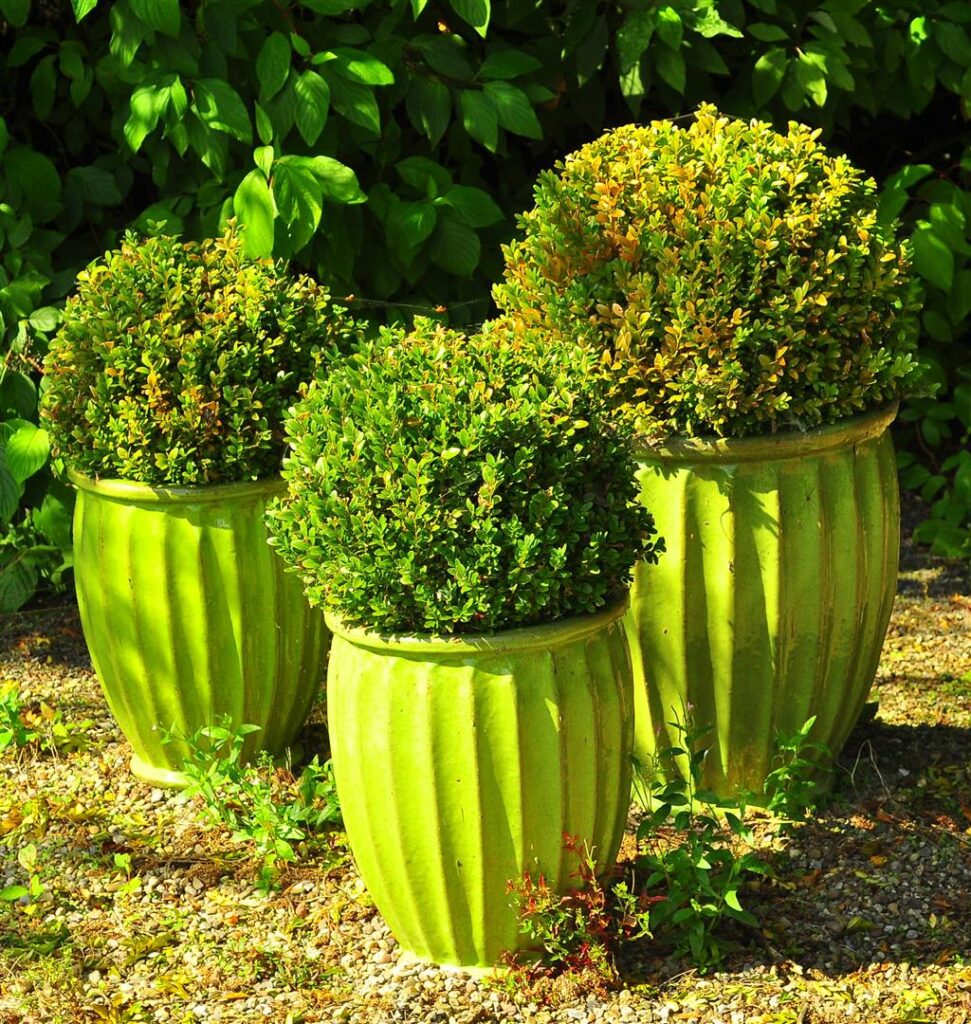
My last choice shrub for the winter garden is the eleagnus and here we grow three varieties which stay in leaf all year , limelight which has a light variegated leaf , maculate and gilt edged which each have a golden variegated leaf . limelight is a fast grower and you need to cut out all green branches as it will eventually take over the entire shrub whereas both the others behave themselves but are much slower growers , all three are terrific shrubs and if space is a problem I would opt for gilt edged .
That’s the winter garden sorted and I know I have left out favourites from every gardener however that is what grows best for our conditions and more importantly what has survived here . I was tempted to add bamboo but for many people it has been a disaster as it romps away unchecked if you select the wrong variety but I would be OK with adding the golden bamboo to my list if you have space at the back of a border no matter how small your plot is as both the golden and black bamboo will not spread and the golden in particular will add great colour to the winter garden .

All these trees and shrubs are very low maintenance , the dog woods will do very well with a hard prune of a third of their branches every March which will keep it in shape and the new growth from the pruned branches will grow back with a more vibrant red while the box balls can be lightly trimmed all over every second June to maintain their shape and the willows need only be cut back if the branches get in the way .
The summer selection of trees and shrubs
Actually after getting the winter structure in place the selection for summer is quite small and as my main two trees I would go for a mountain ash , sorbus moonbeam , lutescens variety , as a stand alone tree and add a red leaf japanese maple if space allowed with Acer Crimson King my top maple choice but if space is tight then there has to be room for a dwarf japanese maple in a large pot in a focal point preferably in semi shade . To finish off I would add some hostas in a small perennial bed and combine some big leafed varieities such as Elegans and Francis Williams with the smaller leaf variety Halcyon and if there is not enough space to accommodate a perennial bed then invest in one or two really large pots and plant the hostas in these and here I would go for bold colours such as blue or red for dramatic effect although terracotta pots make a really good statement also .
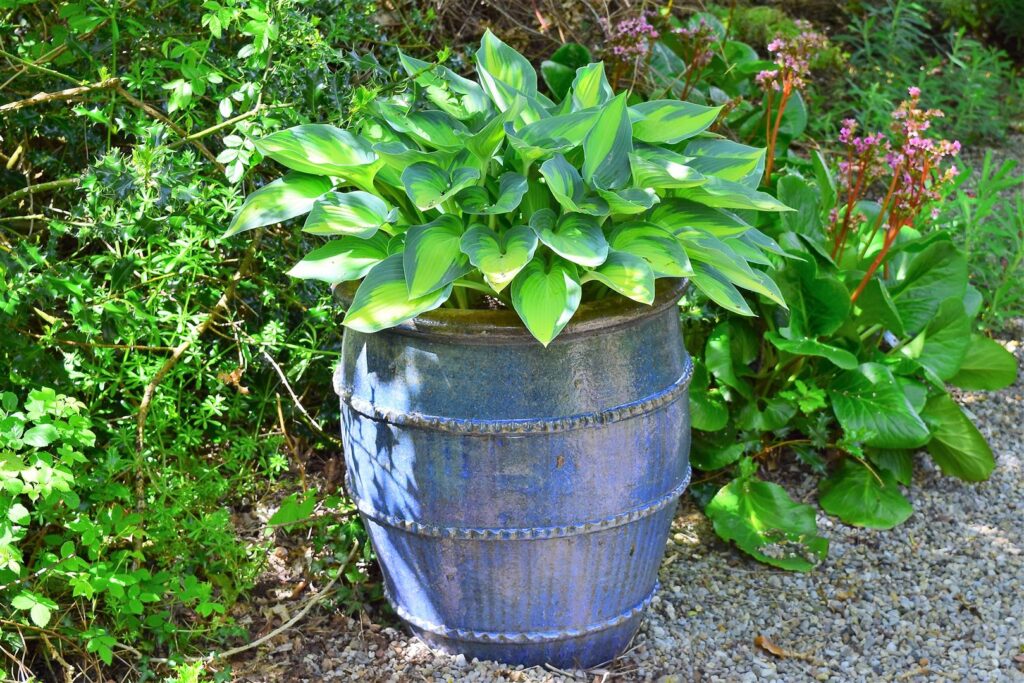
Busy people and aren’t they all busy people right now , especially our children who think they are the BUSIEST people and that we the parents were never busy in our working lives (!) … busy people always want a no maintenance garden that kind of stays as it was when constructed but there always is a little maintenance and so it is with my design … but light really , keep and eye on suckering willows growing out from the base and cut them off , lightly trim the box balls every year or so and nothing wrong either with the shaggy look on box balls , it is important if you grow the hostas I have suggested that you protect them against slugs as soon as their shoots show above the ground in early April, use the little blue pellets at least twice until the end of May … you want to be an environment activist , of course you do , well good luck so with picking the slugs up at midnight or putting beer out in saucers to protect the hostas !
For the summer garden you should always have room for some plants that will give nice colour but more importantly some great smell and here you can combine all this with some santolina and lavender both of which are herbs with a great silver colour all year round and which grow into nice mounds requiring little maintenance apart from a hair cut once a year in April .
I do understand that maintaining a garden when working the day job is difficult , I did it myself for twenty years building my first garden in Rosslare . When your only time off on weekdays is in the evening and you have a small window weatherwise to get everything done in the garden and in the winter months you are pretty much limited to the weekends where there is already loads of things competing for that precious few hours of time off not to mention adding kids to the equation … so gardening time is limited but I would argue that space can be made for it as the benifits of gardening far outweigh those other leisure time demands such as golf or the gym because gardening will give you so much as it is just not only the occasional bit of hard work sometimes but rather is all about creating beauty and getting away from the pressures of life through immersion in nature .
I hate the term low maintenance to be honest especially when applied to a garden as it implies no interest in getting to know even the basics of looking after plants but I understand that people can be afraid of starting from scratch but Google can help with any garden question these days and you don’t need a library of books to get started now in gardening and even if you are the busiest person on the planet then you will find the greatest stress buster there is in gardening .
I spent time in January putting some finishing touches to the edges of the water in the new pond we excavated in the woodland area , I had typed “the ” as in “ the finishing touches ” but realised I was being premature and this is just the beginning of a process that will run and run as I begin the planting up of the new area in the next few months .
I was able to source some beautiful stone from my neighbour , Sebastian , who had saved it from the original old farm buildings on his land and I used this as the foundation build of a series of rock steps to the water ‘s edge in two areas where I have dug in some off cuts of big leaved hostas from the front garden but I won’t be adding rock plants as this style would not blend in well in a woodland setting … also rockeries are hard to keep clean from weeds and eventually smother the rocks whereas here I want these rocks to be seen .
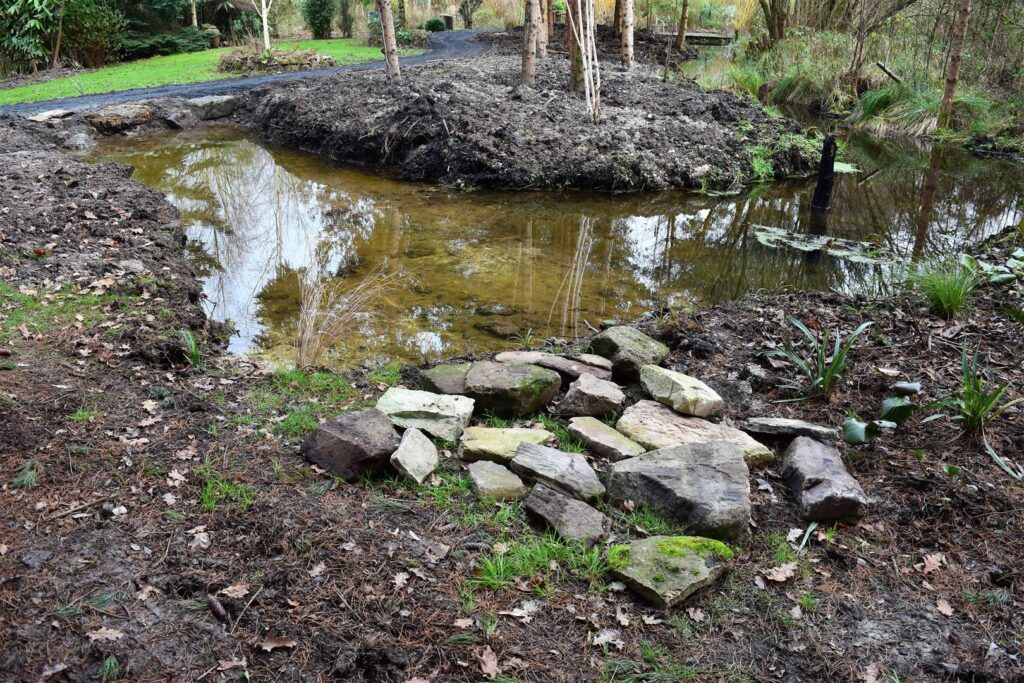
I love working with stone and the hardest part is first assembling the amount of stone needed and laying it out … I had used the digger to lay three big rocks that were in storage here for a few months since we built the rock installation in October until I found a place for them as they were a bit rough and not good enough for that project but here they were perfect and Peter Cullen whacked two of them into place with the digger .

And the third one , the largest which had a nice flat surface we moved into position as a bench overlooking the new water surface . The site calls out for a seat and rather than go for the traditional wooden bench I thought the rock was pretty cool … and the cat thought so too !

The rest of the stone was flat and normal size which I laid by hand and grouted them into place with a mix of gravel and earth .
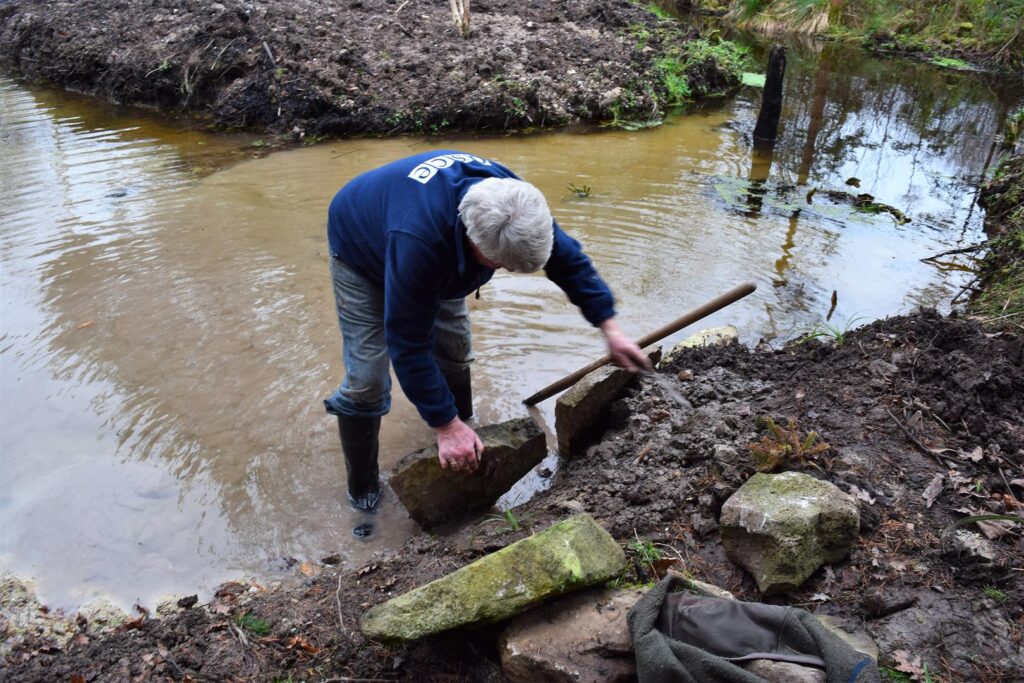
The remaining water area will be left with natural edges where nature will take over and I will add water loving plants such as hostas , iris , primulas , marsh marigold most of which will be off cuts from our own plants here . Apart from adding a nice feature I felt it was necessary to build up these two areas with stone as one area bordered the path and it was safer to outline the water’s edge as there is a drop of a metre at this point and the other area was left sloping by the digger exposing the marl clay surface which could not be planted directly into with marginal water plants so the stone was built into a straight edge which I then ramped up with normal soil for planting .
Our area of Clonmel , Old Spa Road in Kilganey , right at the foot of the Comeragh mountains , is full of natural stone and there are the remains of at least two stone quarries on our laneway and this easily accessible stone over the past centuries was built into beautiful stone ditches along the lane ways and as markers between the fields and our neighbour , Sebastian Boisson , has been collecting these slabs on his thirty acres for the past twenty years and has generously supplied us with stone for our building projects over the years we have been building the garden .
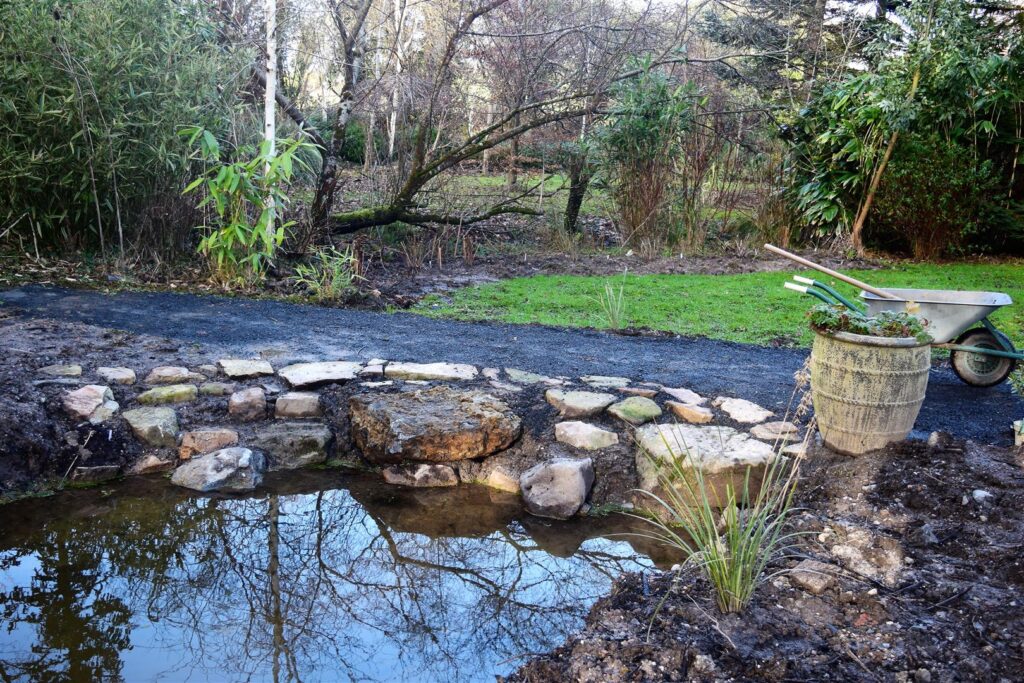
I tweak a lot in the garden and before I am finished with a design be it siting a pot or in this case laying the stone edges I walk around and make sure it clicks from every angle and I am very fussy , obsessive really and will sometimes totally scrap a design if it is not working … when it finally clicks in my mind I will walk away satisfied it is as good as it can be … and today I decided the stone edge needed to have three layers instead of the two I had set out so nothing for it but wheelbarrow out and up the laneway again foraging for more stone … now I needn’t look at it again … the stone edges are finished !


Leave a Reply